
The Oregon Historical Society(OHS) is an organization that encourages and promotes the study and understanding of the history of the Oregon Country, within the broader context of U.S. history. Incorporated in 1898, the Society collects, preserves, and makes available materials of historical character and interest, and collaborates with other groups and individuals with similar aims. The society operates the Oregon History Center that includes the Oregon Historical Society Museum in downtown Portland.

Dunthorpe is an affluent unincorporated suburb of Portland, Oregon, United States. It is located just south of the Portland city limits and north of the Multnomah County line on the west side of the Willamette River. Lewis & Clark College, Tryon Creek State Park, and Lake Oswego are nearby.

The Pioneer Courthouse is a federal courthouse in Portland, Oregon, United States. Built beginning in 1869, the structure is the oldest federal building in the Pacific Northwest, and the second-oldest west of the Mississippi River. Along with Pioneer Courthouse Square, it serves as the center of downtown Portland. It is also known as the Pioneer Post Office because a popular downtown Portland post office was, until 2005, located inside. The courthouse is one of four primary locations where the United States Court of Appeals for the Ninth Circuit hears oral arguments. It also houses the chambers of the Portland-based judges on the Ninth Circuit.

The history of the city of Portland, Oregon, began in 1843 when business partners William Overton and Asa Lovejoy filed to claim land on the west bank of the Willamette River in Oregon Country. In 1845 the name of Portland was chosen for this community by coin toss. February 8, 1851, the city was incorporated. Portland has continued to grow in size and population, with the 2010 Census showing 583,776 residents in the city.

Portland Public Schools (PPS) is a public school district located in Portland, Oregon, United States. It is the largest school district in the state of Oregon. It is a PK–12 district with an enrollment of more than 49,000 students. It comprises more than 100 locations, including 79 schools and other sites that are maintained within the district.

Henry Winslow Corbett was an American businessman, politician, civic benefactor, and philanthropist in the state of Oregon. A native of Massachusetts, he spent his early life in the East and New York before moving to the Oregon Territory. He was a prominent figure in the early development of Portland, Oregon and was involved in numerous business ventures there, starting in general merchandise. His interests later included banking, finance, insurance, river shipping, stage lines, railways, telegraph, iron and steel and the erection of Portland downtown buildings among other enterprises. A Republican, he served as a United States Senator from 1867 to 1873.

Multnomah College, was a two-year, private college located in Portland in the U.S. state of Oregon. Established in 1897 as the Educational Department of the YMCA in downtown Portland, the school was the oldest fully accredited two-year college in the U.S. Pacific Northwest at the time it was absorbed by the University of Portland (UP) in 1969.
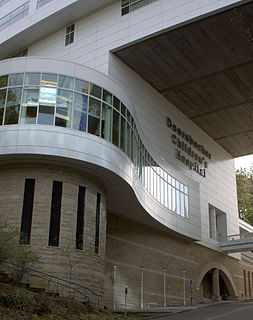
Doernbecher Children's Hospital is an academic teaching children's hospital associated with Oregon Health & Science University located in Portland, Oregon. Established in 1926, it is the first full-service children's hospital in the Pacific Northwest, and provides full-spectrum pediatric care. Doernbecher Children's hospital is consistently ranked by U.S. News & World Report as one of the United States' top pediatric hospitals in multiple medical specialties.

The Portland Public Market was a public market in Portland, Oregon, United States, built in 1933 at a widely advertised cost of $1 million. Controversial and ambitious, it was intended to replace the Carroll Public Market, centered at southwest Fifth and Yamhill Streets; the Portland Public Market was never popular and was in financial trouble virtually from the day it opened.
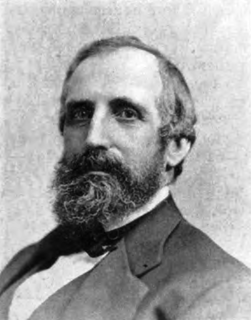
William Sargent Ladd was an American politician and businessman in Oregon. He twice served as Portland, Oregon's mayor in the 1850s. A native of Vermont, he was a prominent figure in the early development of Portland, and co-founded the first bank in the state in 1859. Ladd also built the first brick building in Portland and was a noted philanthropist. Part of his former estate, the Ladd Carriage House, is on the National Register of Historic Places.

The City Club of Portland is a nonprofit, nonpartisan civic organization based in Portland in the U.S. state of Oregon. Established in 1916, the organization had approximately 1500 members and a paid staff of 4 in 2013. The former Mayor of Portland, Sam Adams, served as Executive Director 2013 to 2015. The current Executive Director is Julia Meier.

Ben Selling was a businessman, philanthropist, civil rights advocate, and politician in Portland, Oregon, United States. He was a noted leader in the Jewish community, and he owned a clothing store in downtown Portland.
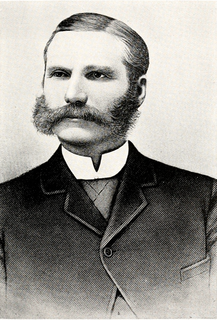
Donald Macleay was a prominent 19th century merchant and banker in Portland in the U.S. state of Oregon. A native of Scotland, he emigrated at the age of 16 with his parents to the Canadian province of Quebec before relocating as an adult to California and, later, Oregon. With his business partner William Corbitt, he established a highly profitable wholesale and shipping business in Portland that centered on groceries and liquor, then wheat, salmon, and timber exports. He invested in Oregon railroads, served for a time as president of the Portland Board of Trade, and is generally credited with founding the U.S. National Bank of Portland, of which he was president toward the end of his life.
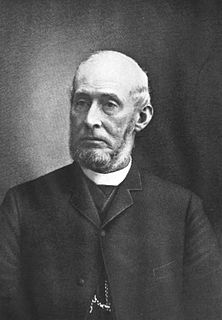
Cicero Hunt Lewis (1826–1897) was a prominent merchant and investor in Portland in the U.S. state of Oregon during the second half of the 19th century. Born in New Jersey, Lewis and a friend, Lucius Allen, traveled across the continent in 1851 to open a dry goods and grocery store in what was then a frontier town of about 800 people living along the west bank of the Willamette River. By 1880, their firm, Allen & Lewis, had become one of the leading wholesale grocery companies on the West Coast.

Harry Russell Albee was mayor of Portland, Oregon, from 1913–1917.
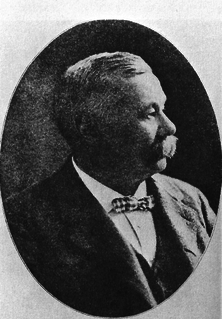
George Washington Weidler was a prominent 19th-century transportation agent, investor, and business owner in Portland in the U.S. state of Oregon. Born in Pennsylvania, he moved as a young man to St. Louis, Missouri, where he began a career in merchandising and shipping. His work gradually took him further west, to Utah Territory, Nevada Territory, California, and in 1866 to Oregon, where he remained for the rest of his life.

Hamilton Forbush "Ham" Corbett was a prominent Portland, Oregon businessman and in his younger years was a leading amateur American football player. He played college football for Harvard University and was a consensus first-team selection to the 1908 College Football All-America Team.
Ernest Boyd MacNaughton was president of the First National Bank of Oregon, then chairman, president of The Oregonian publishing company, and president of Reed College. He is the namesake of the ACLU E.B. MacNaughton Civil Liberties Award.

Stephen Coffin was an investor, promoter, builder, and militia officer in mid-19th century Portland in the U.S. state of Oregon. Born in Maine, he moved to Oregon City in 1847, and in 1849 he bought a half-interest in the original Portland townsite.

Elliott Ruggles Corbett was a Portland, Oregon banker, business leader, owner and builder of a number of the city's buildings, as well as civic leader and benefactor. He was born 29 June 1884 in Portland Oregon and died 2 May 1963 at his home in Dunthorpe, Portland, Oregon, aged 78. He and his two brothers, Henry Ladd Corbett and Hamilton Forbush Corbett were required at a young age to take on the burdens of the businesses, banking and real estate holdings that their grandfather Henry W. Corbett had developed, as their father Henry Jagger Corbett had both died, predeceasing their own father.





















